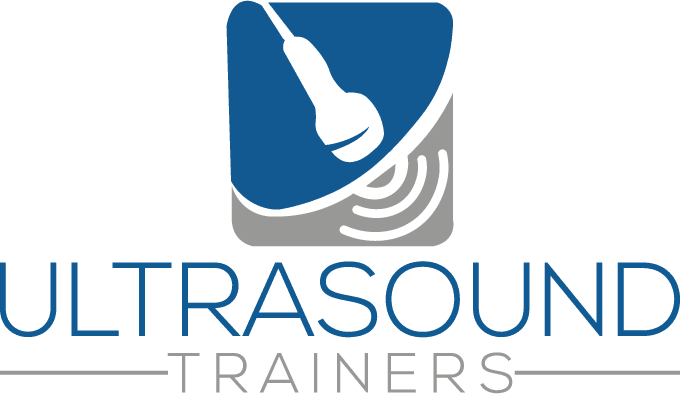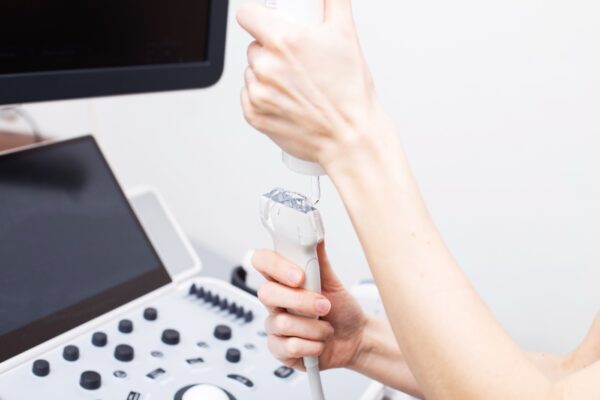Best 4D Ultrasound Machines for Sale (2025 Guide): HD/5D Systems Compared for New & Growing Studios
Updated April 15, 2025 • Every 4D ultrasound machine featured here is warehoused in the United States and can ship within 48 hours.
Opening or upgrading an elective ultrasound business feels exhilarating—and a bit overwhelming. Between choosing the right 4D scanner, securing financing, and mastering HD/5D imaging, the path to a thriving keepsake baby ultrasound studio is paved with decisions that shape your brand for years. This guide dives deep—over 2,000 words—into everything you need to know: machine specs, real‑world ROI, training, marketing, and future trends. Whether you’re starting an ultrasound business from scratch or elevating an established studio, you’ll walk away with an action plan tailored to 2025’s competitive landscape.
Why 4D—and HD/5D—Imaging Is Reshaping the Elective Ultrasound Industry
The Evolution from Grainy 2D to Cinematic 5D
Remember the first time you saw a fuzzy black‑and‑white 2D ultrasound? For decades it was the gold standard, but parents craved more. The shift to 3D stills in the early 2000s felt revolutionary—suddenly you could spot a tiny nose or thumb‑suck. Fast‑forward to 2025 and HD/5D ultrasound is the new benchmark, rendering lifelike skin tones, subtle lighting, and real‑time motion that rivals professional newborn videography.
Technologies such as GE’s HD Live™ and Samsung’s Realistic Vue™ now simulate virtual light sources, soft shadows, and translucent layers. Clients often gasp the first time they watch their baby yawn or stretch in vibrant color. From a business standpoint, that “wow” factor converts browsers into loyal brand advocates who post sessions on TikTok, tagging your studio for free exposure.
Still wondering if HD/5D is worth the investment? A 2024 survey by AIUM found that 78 % of parents would choose an HD/5D package—even at a 25 % premium—over a traditional 3D scan. If you want your calendar booked six weeks out, premium imaging is no longer optional; it’s the admission ticket to today’s elective market.
Ask yourself: Would you pay extra for cinematic memories of your unborn child? If your answer is “absolutely,” your target audience feels the same. Meeting (and exceeding) that expectation is how boutique studios outshine cut‑rate competitors.
Meet the In‑Stock 4D Ultrasound Machines Ready to Ship Today
GE Voluson E6 —The Budget‑Friendly Workhorse
Ideal for first‑time owners, the E6 balances affordability and performance. You’ll get GE’s signature HD Live™, a 19″ LED monitor, and ergonomic controls perfect for long scan days. Refurbished units average $25 k–$40 k, leaving plenty of budget for décor and marketing.
Despite its lower price tag, the E6 includes the same Radiance System Architecture that powers pricier siblings, meaning you can still capture silky‑smooth 4D clips. One caveat: its frame rate caps around 28 fps, slightly below flagship models. If you plan to stream sessions live on big‑screen TVs, you may want more horsepower.
From a training perspective, the E6’s intuitive workflow shortens the learning curve—an advantage when onboarding new sonographers. Many graduates of Ultrasound Business Training Programs rate it as the easiest GE platform for rapid skill acquisition.
Bottom line? If your studio’s average ticket hovers near $120 and you’re booking fewer than 15 sessions a week, the E6 provides a solid ROI without overextending cash flow.
GE Voluson E8 BT19—The Sweet‑Spot All‑Rounder
Stepping up to the E8 unlocks faster rendering, four probe ports, and advanced speckle‑reduction. Clients notice the jump in clarity during side‑by‑side demos—especially on facial close‑ups. Priced around $35 k–$48 k, the E8 is popular among studios that average 20–25 weekly sessions and want room to add vascular or OB/GYN services down the road.
Its optional 23″ high‑definition monitor becomes a marketing asset when parents livestream the scan to distant relatives. The larger display also lets you upsell digital download packages at higher price points—because who doesn’t want their baby’s first 4D movie in full HD?
Operationally, the E8’s modular architecture means lower maintenance costs. Replacement parts are abundant, and Ultrasound Trainers stocks critical components for overnight shipping—crucial when Saturday appointments stack up.
If you envision scaling to multiple rooms or even an ultrasound franchise, the E8’s reliability and upgrade path make it a smart backbone for standardized protocols.
GE Voluson E10 —Flagship Power at Easter‑Special Pricing
The E10 commands attention: Radiance System Architecture 2.0, HD Live Silhouette™, and XDclear 2.0 probes that elevate image depth and contrast. At $40 k (refurbished Easter special), it undercuts new retail prices by nearly 60 %—yet delivers flagship performance.
Why pay more? Frame rates soar above 40 fps, perfect for recording kick sequences or heartbeats without motion blur. Its massive 23″ widescreen also doubles as a branding tool: upload your logo as a boot‑up splash screen to reinforce studio identity every time you power on.
Scanning twins? The E10’s enhanced processing renders dual fetal faces simultaneously without lag—an Instagram‑worthy moment that often leads to referral chains. Studios averaging 30+ weekly sessions typically recoup the investment within 14 weeks.
Pro‑tip: Pair the E10 with Ultrasound Trainers’ Advanced HD/5D Elective Ultrasound Training for cinematic results that command premium pricing.
Samsung WS80A Elite—Crystal‑Clear Value for Mid‑Size Studios
Samsung’s Realistic Vue™ engine produces warm skin tones beloved by social‑media moms. Add Crystal Clear Cycle™ technology, and you’ll capture subtle expressions—think pouts, smiles, and eye rubs—that make viral reels.
At $26 k–$33 k, the WS80A competes directly with GE’s E8, but many operators prefer Samsung’s Android‑like interface and customizable touch gestures. Its 21.5″ LED monitor is mounted on a swiveling arm—handy for tight rooms.
The scanner also ships with 5D CNS+ software (diagnostic mode) that, while not used in elective settings, can open doors to partnerships with local OB practices—an often‑overlooked revenue stream.
If you’re pivoting from photography to ultrasound, the WS80A’s vibrant color palette mirrors DSLR aesthetics, easing the transition for visual storytellers.
Samsung Hera W10—The Cinematic Showstopper
Think of the Hera W10 as the IMAX of elective imaging. A towering 27″ LED wall monitor faces your audience, while an 18.5″ touch console keeps controls at your fingertips. Refurbished specials hover around $40 k, but the client reaction is priceless.
Features like MV‑Flow™ and Lumi Flow™ add dynamic vascular mapping, transforming routine heartbeat checks into mesmerizing color shows. Parents frequently request raw MP4 files to edit into gender‑reveal montages, giving you an easy upsell.
Operationally, the Hera’s silent cooling fans reduce ambient noise—a small detail that heightens spa‑like ambiance. Coupled with dimmable LED accent lighting, your studio transforms into an immersive theater that guests rave about on Google reviews.
Planning multiple locations? The Hera’s enterprise‑grade remote diagnostics mean techs can troubleshoot without site visits, minimizing downtime—a big win for franchise scalability.
How to Choose the Perfect 4D Scanner for Your Studio’s Goals
Budget vs. Brand Perception
Your scanner doubles as a marketing statement. GE’s Voluson line enjoys decades of brand equity—parents often recognize the logo from OB visits, which adds trust. Samsung, meanwhile, exudes sleek tech vibes that appeal to millennials. Consider what resonates with your local demographic and how much you’re willing to invest in perception.
Remember, “affordable” doesn’t equal “cheap.” Positioning an E6 as a high‑value experience backed by stellar customer service can outperform a flagship system run by disengaged staff. Equipment is the stage; your team’s expertise delivers the show.
Ask yourself: Do my clients value a household brand name, or do they care more about ambiance and add‑ons? The answer guides your purchase.
Finally, calculate total cost of ownership: warranties, probe replacements, and software updates. An inexpensive unit with scarce parts may cost more in the long run.
Studio Layout & Ergonomics
Measure twice, move once. Small boutique studios often underestimate space for probe cables, printers, and parent seating. The WS80A’s swiveling monitor saves inches, while the E10’s larger chassis needs clear pathways.
Consider sight lines: Parents seated at 45° angles capture better phone videos than those directly behind the console. If you film reaction reels, leave space behind the bed for a tripod or gimbal.
Mobile studio? The E6’s lighter weight simplifies van conversions. Just secure shock‑absorbing mounts to protect internal boards during transit.
Accessibility counts too—install adjustable stools and anti‑fatigue mats so sonographers maintain posture during marathon weekends.
Future‑Proof Features & Software Ecosystems
AI‑driven auto‑measurements shorten scan times, letting you squeeze extra appointments into peak Saturdays. GE’s SonoRender Live and Samsung’s Auto Face are lifesavers when babies bury their faces against the placenta.
Cloud‑based DICOM export may seem unnecessary for elective imaging, but it facilitates telehealth collaborations with OB partners, adding diagnostic referrals to your revenue mix. A scanner with secure VPN options positions you ahead of regulatory curves.
Ask vendors about firmware roadmaps. Will your machine support next‑gen transducers? How often are image‑processing algorithms updated? An extra $2 k upfront may save a $10 k upgrade two years later.
Finally, confirm local service coverage. Ultrasound Trainers maintains a nationwide network of certified engineers; a 24‑hour response SLA can be the difference between business as usual and refund chaos.
Financing, Cost of Ownership, and Real‑World ROI Calculations
Equipment Financing 101
Securing 100 % financing through partners like Flourish Commercial Capital keeps your capital free for marketing. Typical terms: 5 years, 8–10 % APR, and zero down for qualified borrowers. A refurbished E10 at $40 k translates to roughly $849/month.
Compare that to revenue potential: Even 15 HD/5D sessions per month at $150 each cover the payment with $1,401 to spare. Everything above that is profit or reinvestment into branding, staff, or expansion.
Thinking bigger? Multi‑location operators often bundle three machines into a single master lease, scoring volume discounts and consolidated billing.
Pro‑tip: Structure payments with a 90‑day deferment so you can market pre‑opening packages, generate cash, and cover the first invoice before it arrives.
Operational Costs Beyond the Scanner
Factor consumables: thermal printer paper (~$0.12 per print), ultrasound gel (~$19/gallon), and cleaning supplies. Average cost per session lands near $3.50—pennies compared to your ticket price.
Insurance varies by state but expect $1,200–$1,800 annually for liability. Some carriers offer discounts when you complete elective ultrasound training with Ultrasound Trainers because it lowers risk.
Utilities? HD/5D machines draw minimal power (under 1 kW), so electricity rarely tops $50/month. The real energy hog is climate control; pregnant moms appreciate a cool room.
Add website hosting, booking software, and social‑media ads, and a lean solo studio often runs under $2,800 monthly—including financing. At 40 sessions a month, that’s a 60 %+ profit margin.
Case Study: Photographer Turned Ultrasound Mogul
Sophia owned a boutique maternity photography studio in Austin. After noticing clients drive 45 minutes for 4D scans, she financed a Samsung WS80A for $0 down and $589/month. She cross‑sold HD/5D packages to existing photo clients, averaging 22 scans in her first month.
Within six months, ultrasound revenue surpassed photography sales. Sophia added an E8, hired a certified sonographer, and now grosses $27 k monthly. Her story underscores the synergy between visual arts and elective imaging—proof that diversification pays.
Could your current business—spa, yoga studio, OB clinic—benefit from a similar add‑on? If yes, a 4D scanner might be the catalyst that triples lifetime client value.
Ready to run your numbers? Download Ultrasound Trainers’ free Cost of Starting an Ultrasound Business worksheet and plug in your local rent, labor, and pricing assumptions.
Training, Certification, and Compliance: Building Credibility from Day One
Elective Ultrasound Training Options
You wouldn’t hand a DSLR to a rookie and expect magazine covers; the same logic applies to ultrasound. Ultrasound Trainers offers hands‑on, private courses tailored to elective imaging. Trainees practice on real expectant moms, mastering probe angles, fetal positioning, and session flow.
Course lengths range from 2‑day intensives to 5‑day immersive programs that include business coaching. Graduates receive certificates that reassure insurers and clients alike.
Prefer to learn remotely? Virtual mentorships pair you with a certified instructor via live video. While nothing beats tactile feedback, remote learners still report a 30 % faster skill ramp than DIY YouTube routes.
Tip: Schedule training before your ultrasound machine arrives so you’re ready to monetize day one.
Regulatory Landscape & Liability Considerations
Elective ultrasound operates outside diagnostic scope, but that doesn’t mean “no rules.” Many states require sonographers to refer clients to licensed physicians if anomalies appear. Displaying a clear disclaimer in your studio and on booking pages safeguards against misunderstandings.
Professional liability insurance often hinges on documented training. Completing an accredited program can shave 10–15 % off premiums—a savings that compounds year after year.
Keep meticulous records: session logs, consent forms, and equipment maintenance. Digital platforms like Tricefy streamline secure storage and meet HIPAA‑equivalent standards, future‑proofing your business against evolving regulations.
Thinking of franchising? Establish SOPs that standardize compliance across locations. Consistency builds brand trust and simplifies audits.
Ongoing Mentorship & Community Support
The learning doesn’t end after graduation. Ultrasound Trainers’ alumni Facebook group hosts monthly live Q&As, case‑study breakdowns, and marketing brainstorming sessions. Need a quick tip on breech‑baby imaging? Post a clip and crowd‑source solutions from hundreds of operators.
Members also share vendor discounts on heartbeat bears, printed keepsakes, and gender‑reveal supplies—bulk savings that directly boost margins.
Surrounding yourself with peers accelerates growth and prevents burnout. Remember, entrepreneurship can be lonely; community makes the journey sustainable.
How would your confidence change if you had 24/7 access to experts? For most owners, that safety net is priceless.
Ultrasound Business Marketing Tips to Keep Your Calendar Fully Booked
Video‑First Social Media Domination
Instagram Reels and TikTok clips featuring HD/5D kicks consistently outperform static posts by 3× in reach. Post two 15‑second videos per week, each set to trending audio. Use geo‑targeted hashtags such as #DallasMoms, #5Dultrasound, and #KeepsakeBaby to capture local audiences.
Hook viewers with curiosity—“Will Baby A look like Mom or Dad?”—and end with a strong CTA (“Book your HD/5D scan this weekend!”). Platforms reward watch time, so overlay captions for silent scrollers.
Collaborate with maternity influencers. Gift them a free session in exchange for honest reactions. One viral reel can spike website traffic by 40 % overnight.
Finally, repurpose content: convert reels into YouTube Shorts, embed them in blog posts, and share on Facebook groups. Omnichannel visibility multiplies leads.
Local SEO & Blog Authority
Ranking on page one of Google is free advertising that compounds. Target long‑tail queries—“how to open a 3D ultrasound studio”, “HD/5D ultrasound vs 3D”—and answer them comprehensively. Interlink posts to create topical authority, and cite reputable sources like FDA consumer updates for credibility.
Embed booking widgets in blog sidebars so readers convert without extra clicks. Pro‑tip: Add schema markup to blog pages so star‑ratings appear in search snippets, boosting click‑through rates by up to 30 %.
Update content quarterly. Google favors freshness, and it’s an opportunity to highlight new packages or seasonal specials.
Don’t forget internal links to service pages, financing info, and training programs—it keeps readers on‑site longer and signals relevance.
Email Marketing & Referral Funnels
Build a list from day one. Offer a downloadable “Ultimate Pregnancy Countdown Checklist” in exchange for emails. Segment by due date and send trimester‑specific content: first‑trimester scan prep, second‑trimester gender‑reveal ideas, third‑trimester 5D session discounts.
Automate post‑visit sequences: thank‑you notes, review requests, and referral coupons. Studios that incentivize referrals with $10 gift cards see a 15 % uptick in bookings within three months.
Pair emails with SMS reminders—no‑shows plummet when clients receive a friendly text 24 hours before their appointment.
Want to take it further? Create a VIP membership: for $99, parents get three scans, priority booking, and 10 % off retail items. Recurring revenue stabilizes cash flow during slow seasons.
Looking Ahead: Trends Shaping Elective Ultrasound Through 2030
Virtual Reality & Immersive Experiences
Imagine parents slipping on VR headsets to “walk” around their baby in utero. Companies are prototyping 6D renderings that map 4D data onto immersive environments. Early adopters can charge premium “VR Keepsake” packages, tapping into a tech‑savvy market segment.
GE and Samsung have hinted at firmware updates enabling VR export. Choosing a scanner with robust GPU architecture positions you to offer cutting‑edge services without hardware swaps.
Curious clients create free buzz; local news outlets love covering futuristic prenatal experiences. A single TV segment can generate months of organic traffic.
Ask yourself: Will your current business model adapt quickly enough? Planning for emerging tech keeps your studio relevant.
AI‑Enhanced Personalization
Machine‑learning algorithms soon will auto‑select best‑angle stills, edit skin tones, and compile highlight reels—reducing post‑production time. Imagine delivering a fully edited video to parents before they leave the studio.
AI chatbots on your website can handle FAQ triage, freeing staff to focus on in‑person experiences. Early testers report a 20 % decrease in phone inquiries after implementing conversational AI.
Ethical note: Maintain transparency about AI‑generated enhancements. Parents appreciate authenticity and informed consent.
Studios embracing AI stand to double productivity without sacrificing quality—an edge as competition intensifies.
Sustainability & Eco‑Friendly Operations
Gen‑Z parents value brands aligned with environmental stewardship. Switching to BPA‑free thermal paper, biodegradable gel packets, and energy‑efficient LED lighting signals social responsibility.
Market your green initiatives. A simple Instagram reel showing your recycling setup humanizes your brand and differentiates you from competitors still using single‑use plastics.
Some municipalities offer tax incentives for energy‑efficient equipment upgrades, offsetting costs. Consult local guidelines to capitalize on rebates.
Aligning with eco‑values isn’t just feel‑good—it drives bookings from conscious consumers.
Frequently Asked Questions
How long does it take to break even on a 4D machine?
Studios averaging 20 sessions per week at $150 each typically recoup a mid‑tier scanner (E8 or WS80A) within six to nine months. Flagship models like the E10 and Hera W10 often break even in under four months when paired with premium pricing and upsells.
Break‑even speed hinges on marketing consistency, local competition, and add‑on attachment rates. Use Ultrasound Trainers’ ROI calculator to model your exact scenario.
Remember, time is money—faster rendering machines enable more sessions per day, accelerating ROI.
Consider bundling packages (e.g., three‑scan journey) to secure revenue upfront and stabilize cash flow.
Can I start a 3D/4D ultrasound business without medical experience?
Yes. Elective studios operate outside diagnostic medicine, focusing on keepsake imaging. Comprehensive elective ultrasound training covers anatomy basics, machine settings, and client communication, empowering entrepreneurs from photography, spa, or retail backgrounds.
Many successful owners had zero healthcare exposure before training. The key is rigorous hands‑on practice and adherence to safety protocols.
Check local regulations; some states require physician oversight or referrals for anomalies. Compliance builds credibility and mitigates liability.
Pair your training with a solid business plan that addresses licensing, insurance, and marketing.
What are the biggest mistakes new studio owners make?
Underpricing services, neglecting SEO, and skipping formal training top the list. Another pitfall: buying a low‑end scanner that can’t deliver HD/5D quality, forcing an expensive upgrade later.
Some owners also underestimate décor and ambiance. Parents remember the cozy couch, calming music, and complimentary sparkling water as much as the scan itself.
Finally, ignoring upsell opportunities leaves money on the table. Heartbeat animals, gender‑reveal cannons, and photo frames can add 20 % to each ticket.
Learn from others’ missteps—join industry forums and attend conferences to stay ahead.
Key Takeaways & Next Steps
- HD/5D imaging is the new baseline; choose a scanner that delivers cinematic quality parents will pay for.
- Financing spreads cost over five years, letting revenue cover payments from day one.
- Hands‑on training, robust marketing, and community support are the trifecta of sustainable growth.
- Future‑proof your studio with AI, VR, and eco‑friendly practices to stay competitive through 2030.
Ready to transform expecting parents’ memories into breathtaking HD/5D experiences? Contact Ultrasound Trainers for real‑time pricing, financing pre‑approval, and upcoming training dates. Thinking about franchising or expanding? Ask about our turnkey packages that include equipment, branding, and ongoing mentorship.
Are you already running a studio? Share your biggest challenge in the comments below. Let’s build a community where everyone’s success story begins with a single scan!
Learn More About Ultrasound Training Learn More About Opening an Ultrasound Studio












